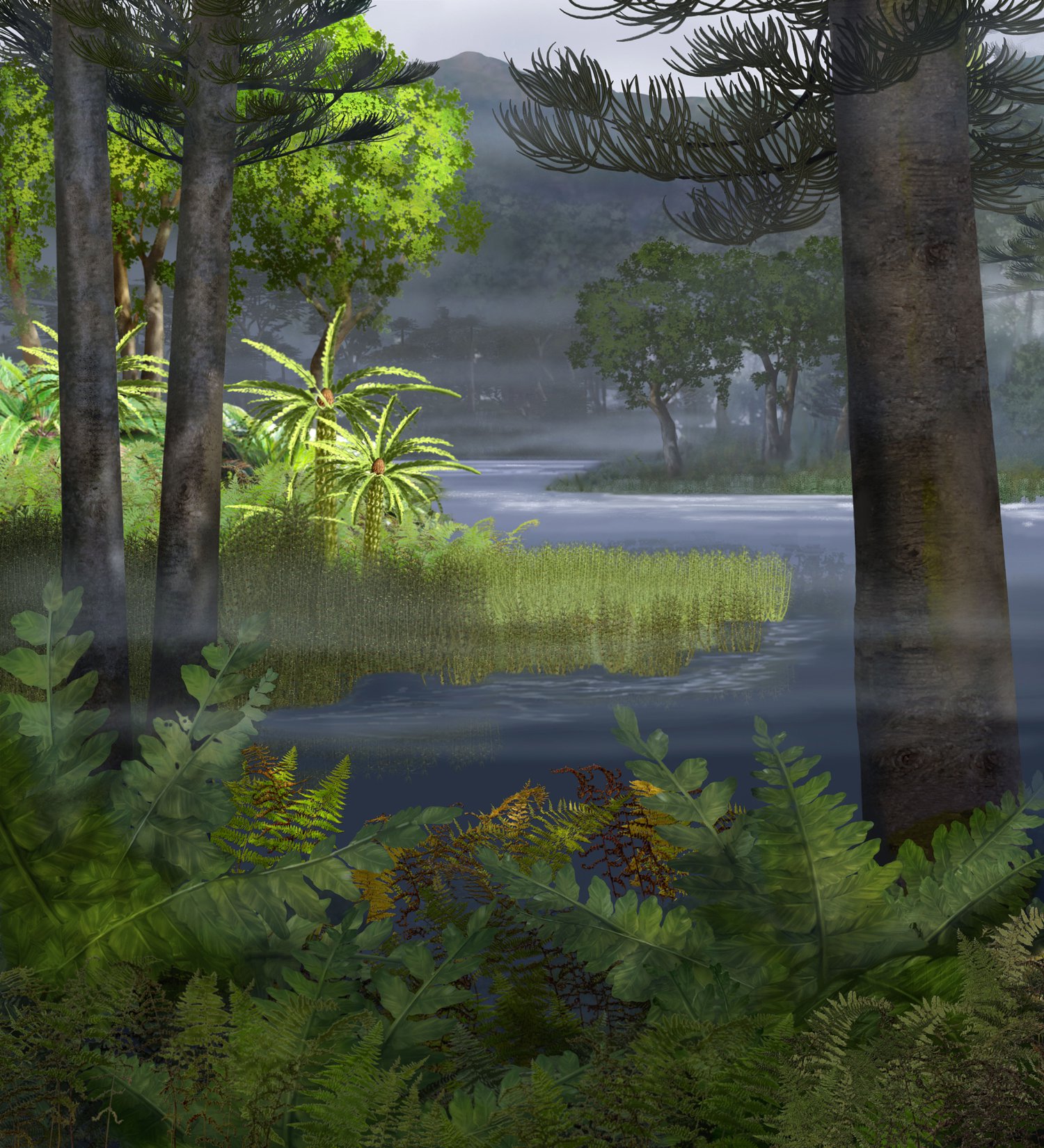The Jurassic Period (201 - 145 million years ago)
The Jurassic was warm and wet with flourishing plant life supporting a diverse fauna.

A typical landscape of the Jurassic Period, 201 - 145 million years ago.
Image: Karen Carr© Karen Carr/Australian Museum
Australia's Jurassic facts
Position
- Australia was still at high latitudes with much of the continent lying between 60 and 45 degrees south.
- The break-up of Gondwana was just beginning.
Climate
- There were no polar ice caps and the world climate was warm and increasingly humid with little differentiation into climatic belts. Carbon dioxide levels were about seven times higher than today.
Setting
- Most of Australia was land with large sedimentary basins developing in both eastern and western Australia
Vegetation
- Forked seedferns had disappeared but horsetails, club-mosses, ginkgoes, ferns, cycads and conifers continued dominate the environment.
Animals
- Dinosaurs were beginning to dominate the land but little evidence for them has been found in Australia. There is evidence for aquatic environments being dominated by fish and the occasional labyrinthodont amphibian.
What was happening in the rest of the world
- The main dinosaurs were theropods, sauropods, early stegosaurs, and hypsilophodontians.
- Fishes, plesiosaurs and ichthyosaurs dominated the sea.
- Long-tailed pterosaurs still ruled the air.
- Advanced amphibians such as frogs appeared.


